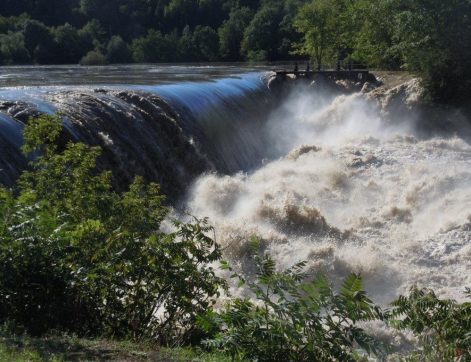The recent events in California regarding the Oroville Dam have highlighted dams and how they impact our communities. Like many of my colleagues, I have heard questions such as, “Why did the situation develop?” “Why did it take so long to evacuate the downstream area?” “Who is at fault?” And the most frequent comment… “Why did the dam fail?”
First, due to the experience, efforts, and capabilities of those in positions of responsibility, the situation in Oroville has been stabilized. Public officials worked tirelessly to mitigate the situation and ensure public safety throughout the emergency.
Second, I can only speculate when responding to questions about the structure of the dam, its maintenance, and its operation. Answers to those questions will be provided as the waters recede, through forensic investigations and the review of historical records.
The question that most people are afraid to ask is: “Can a similar scenario happen here in New England?” Although our dams are smaller in this part of the county and, in the event of a potential failure would likely impact fewer people, the answer is “Yes.” As one of the responding engineers, I remember well the week in October 2005 when a portion of downtown Taunton, MA was evacuated as an old mill dam threatened to release the flood waters resulting from nine days of record-breaking rainfall. Our dams here in New England are integral to our communities. They impound our drinking water, provide flood attenuation, and impact where and how we build. But many are old—older than the Oroville Dam.
In New England, we have an appreciation for dams and the benefits they provide, while understanding the hazards that come with those benefits. There are active Dam Safety programs in each New England state that have prescribed inspection schedules based upon the hazard potential for each dam. Dedicated and knowledgeable dam safety professionals regularly complete inspections to ensure public safety. There are responsible dam owners that maintain their dams on a regular basis.
Many of the dam owners for whom we work understand the problems associated with the age of their dams. Some have embarked on multi-year programs to improve their entire inventory of dams. Some have instituted a program of upgrades to meet design standards that were not in place when the dam was originally constructed. Others have established programs to remove dams that are no longer beneficial and provide flood attenuation, water supply, and recreation through other means
These proactive steps are being taken to improve the condition of each dam, protect the environment, safeguard the resources around the dam, and shield the downstream public. So as budget requests for dam repairs are presented, when emergency action plans are developed, and when disaster drills are conducted, remember the 160,000 individuals sitting in their cars below the Oroville Dam as they evacuated. Please support these dam safety initiatives, as they will ultimately protect the communities where we work and live.



